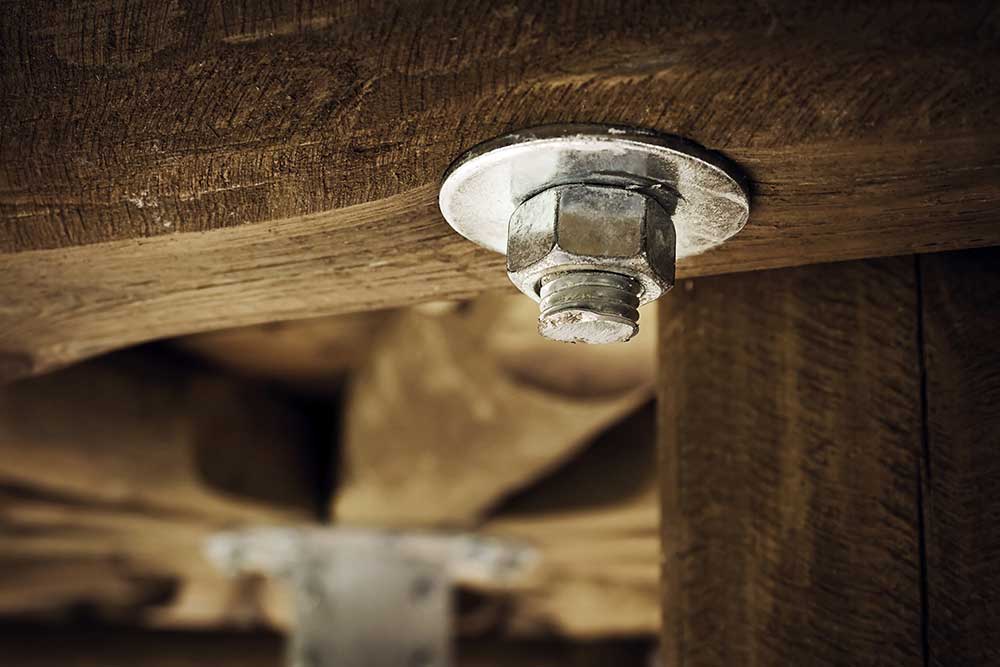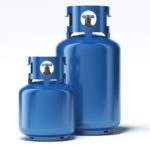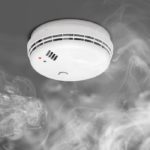You can usually tell if a propane tank is empty by picking it up and giving it a gentle swoosh to see if you can feel propane sloshing around. You can also place a propane tank on a scale and if the reading matches the weight tag on the handle, you know it’s empty. If you have empty tanks laying around, there’s no reason that’s a problem, but you may wonder if an empty tank will rust over time.
An empty propane tank can rust from the inside out over time. If the valve is open, it’s easier for air or moisture to penetrate the tank and cause rust. Empty tanks should be stored with the valve shut. Remember the valves can fail too, though it’s rare.
This article will give you insights on many strategies you can use to prevent your propane tank from rusting and how to remove the rust if it occurs. We’ll also cover external rust on the outside of the tank. Let’s look closer at some of the details here so you can be confident in how you’re storing your propane tank(s).
Do Propane Tanks Rust?

Air and moisture can enter an empty storage tank, causing rust to form inside the tank. What’s more, rust can reduce the concentration of propane’s usual odor, making it more difficult to detect should there be a leakage. The rust process, in which iron oxide forms, actually “uses up” the chemical that’s added to propane so that human’s can smell it.
How Do You Keep a Propane Tank From Rusting?
To prevent external rusting: during the summer, keep your tank out of direct sunlight. Instead, look for a place with a lot of shade. To avoid corrosion and tank damage, protect your tank from inclement weather. If temperatures are regularly high, you can use the discharge valve of the propane tank to lessen the pressure.
For internal rusting, the game is more about keeping the tank under pressure and maintaining the valve. Positive pressure in the tank (when it’s NOT empty), will push against the valve and not let any air or moisture in. An empty tank, though, is relying on just the valve to keep air and moisture out, and that valve should do that job just fine when the tank is empty so long as it’s shut.
But an empty tank, with an open valve, will eventually collect air in it and the air will have humidify. Then, liquid water will form inside, through condensation, and the tank will start to rust.
Tips and Tricks for Propane Tank Storage (To Prevent Rust)
- Never store your propane tank in temperatures exceeding 120 degrees Fahrenheit (49 degrees Celsius).
- In the winter, keep your tank above -44 degrees Fahrenheit (40 degrees Celsius).
- Keep your tank out of direct sunlight.
- Never keep your tank upside down or on its side.
- When storing your tank, always make sure you turn the gas valve off.
- Never keep a propane tank inside your house or car.
How Do You Remove Rust From The Outside of a Propane Tank?

First, just so you know, we aren’t going to cover removing rust from inside a propane tank. If you’re in that situation, you need a professional’s advice, and they’re probably going to tell you to not bother fixing that tank. They probably won’t reprocess or recertify it. This is because internal rust may have compromised the pressure-handling integrity of the tank.
What about external rust though? Rust on the propane tank can be an eyesore and appear to be an obstruction, but it isn’t a cause for concern. So, how do you get the rust off your propane tank and refinish it?
You can use abrasives, chemicals like baking soda and vinegar, chemical resealing treatments, or electrolysis to remove rust from a propane tank. If the rust hasn’t eaten too deeply into the tank, you can repaint it.
Let’s take a closer look at some of the options for removing rust.
Brush Off the Rust
This is one of the simplest methods for eliminating rust from the surface of a propane tank. Scrub the rust away with a simple wire brush (on Amazon) or a course-grit sandpaper (also on Amazon), and then rinse with a garden hose. If the sandpaper or brush scratch the paint – don’t worry, we’re going to look at repainting the tank in a bit as well.
This method will eliminate rust, but it will also remove all kinds of dirt and buildup. It does, however, demand a bit of labor depending on the size of the tank. If you have a pressure washer handy, using that instead of a hose might give you even better results.
Baking soda
Baking soda is very helpful on rust stains. It eliminates rust on metal items, and rust marks that might have been brushed into clothes or upholstery.
Make a thick paste with water and baking soda, and spread it all over the metal, making sure rusty spots are well covered. Let the paste settle on the object for about an hour. Scour the object with steel wool or a wire brush to remove the rust. Rinse the paste with water and pat it dry completely.
Vinegar
White vinegar can help with more tenacious rust. This ordinary home item has enough acetic acid to dissolve rust. Smaller items, such as earrings, can be soaked in them, or they can be wiped over a surface with an old cloth, or they can be poured directly over rust areas or corroded bolts and screws.
After the rust has dissipated, you want to clean all the vinegar off too, because that will negatively impact the metal over time if it’s left on the surface.
Can I Paint a Propane Tank?
It’s absolutely fine to use propane tank paint to spruce up your furnace’s propane tank, but be sure to observe all safety precautions.
First of all, you can’t use any color of paint. Except in an extremely cold climate, propane tanks are required by regulatory laws to be painted a heat-reflective hue. A dark hue absorbs more heat, causing gas to expand and potentially causing the safety valve to open and gas to escape.
This is because when tanks heat up, the pressure of the gas inside them rises. To keep propane tanks cooler, avoid dark colors that absorb heat from the sun. Instead, choose light, heat-reflective colors like white, silver, or light gray. A good option is the All States ASAP Propane Tank Paint (on Amazon).
To avoid a subsequent flaky, peeling paint job, clean and prepare the surface appropriately. Use rust-inhibiting paint or industrial paint made for metal to prime and paint the tank.
Prepare the Tank Surface
Before painting your tank, clean it entirely and peel off any flaking paint, paper labels, or other material such as rust. Using a wire brush, remove any rust or flaking paint. To smooth rough spots, sand the tank with 120-grit sandpaper (on Amazon), or the same sandpaper you used to remove the rust. To clean off dust from the sanding, wipe the surface with a clean cloth.
It’s possible to use all-in-one paint, like Heirloom Traditions All-in-One Paint (on Amazon), for the propane tank. If you use this sort of paint, you can skip the priming stage. You can replace spray cans with a paint roller.
Wash the Tank
You must properly wipe away any debris you removed before you paint. To clean oil and residue from the tank, use dish detergent and water. Using clean water, rinse the tank. Allow for thorough drying of the tank.
Prepare the Painting Area
You should place drop cloths on the ground around large tanks. Using painter’s tape, mask all portions of the tank that you don’t want to be painted. Tape over the data tags to prevent them from being covered by paint. If the data is not readable, you may be denied refill service.
Use Metal Primer
Always use a metal primer (on Amazon) before painting metal because it is susceptible to rust. Enable the primer to dry according to the manufacturer’s guidance.
The second coat of priming should be applied. Enable the primer to dry totally before applying the next layer of paint. As we mentioned above, you can skip the priming stage if you use an all-in-one metal paint and primer.
Paint the Tank
To get ready to paint, follow the instructions on your propane tank paint. Shake the paint can for the entire time specified on the can. Using a smooth, side-to-side sweeping motion, apply a light coat of paint to the tank.
Enable the paint to dry according to the manufacturer’s guidance. Apply a few light coats of paint until you’ve reached the preferred thickness. Wait 24 hours for the paint to fix.
Final Words
Many homes rely on propane tanks for warmth, but you must maintain them to ensure safety, durability, and exterior appeal. When a propane tank rusts, it has several severe consequences. To remove the rust, use abrasives, electrolysis, chemicals, and resealing products to scrub it off and clean the tank.
You can refinish the tank by painting it with rust-inhibitor paint, but make sure you adhere to the paint type and color specifications. It’s also worth noting that you shouldn’t spray paint outside on a windy day.
Paint produces vapors. When painting, use a mask. In this manner, following an inspection, your tank can be re-certified, improving its safety and longevity.








